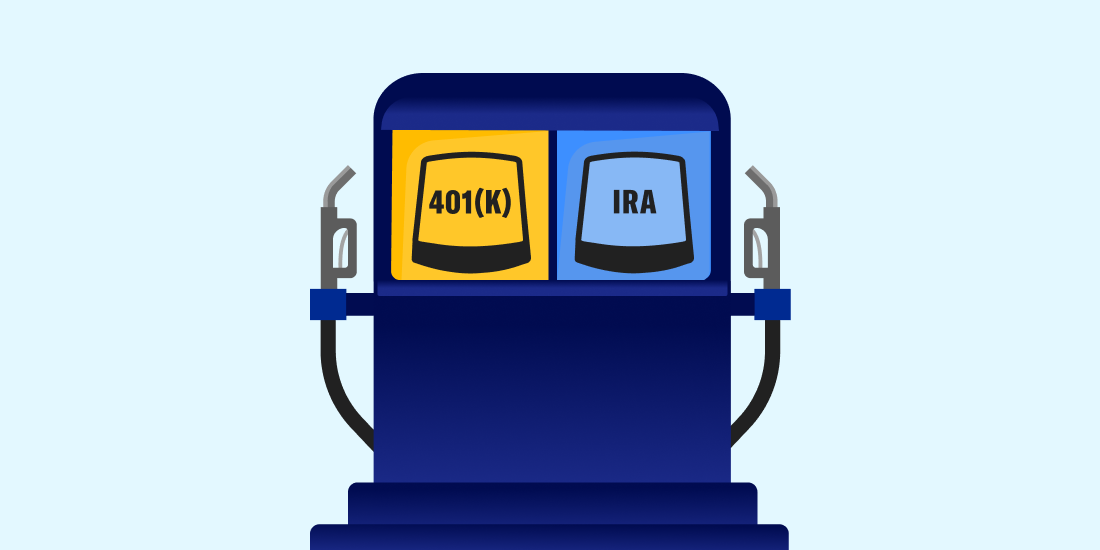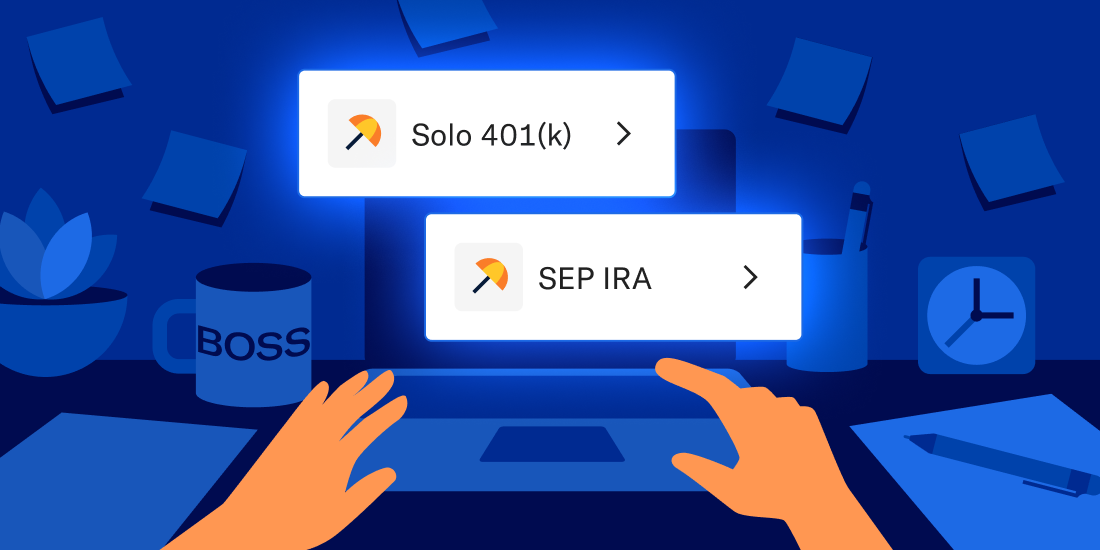401Ks

Featured articles
-
![]()
The five types of investing accounts you need to know
From 401(k)s to 529s, investment accounts vary in purpose. Learn which are better suited for ...
The five types of investing accounts you need to know From 401(k)s to 529s, investment accounts vary in purpose. Learn which are better suited for your long-term financial goals. Investment accounts are valuable tools for reaching your financial goals. But they’re not all the same. You have choices to make, but we’re here to help. Why it matters: Choosing the right investment accounts could mean reaching your goals ahead of schedule. Conversely choosing the wrong accounts could mean you don’t have the money when you need it. Know your goal: Whether you’re simply trying to build wealth or you have a specific goal in mind, knowing what you want to do will guide what account type you choose. Three of the most common goals are: Saving for your retirement Saving for a major purchase such as a house Saving for your own or a loved one’s education The big five: Once you know your investing goal, one of these five types of accounts should likely do the trick: IRAs 401(k)s Health Savings Accounts (HSAs) Individual (or Joint) Brokerage Accounts 529 plans Saving for retirement? Look at these tax-advantaged accounts: IRAs are used to save for retirement, offering unique tax advantages. Unlike a 401(k), your contributions don’t automatically come from your paycheck and the annual contribution limits are lower, about three times lower in fact. An IRA can be an excellent choice. They also may be subject to penalties for early withdrawals. 401(k)s are retirement accounts offered by employers, providing tax advantages similar to an IRA. Contributions are automatically deducted from your paycheck and sometimes employers match a percentage as an added benefit. Keep in mind, you’ll usually incur penalties for early withdrawals. HSAs are designed primarily to help individuals pay for health care costs but once you turn 65, you can use them for anything you want without incurring penalties. Plus, you enjoy triple the tax advantages. Things to know about retirement investing accounts: There are limits: Retirement accounts have different contribution limits (the amount you can deposit each year) based on account type. If you’re looking to save an uncapped amount each year, a brokerage account can be used after maxing out retirement accounts. Did someone say tax-advantaged? The tax advantages of 401(k)s and IRAs come in two flavors: Roth and Traditional. A Roth account may be better if you think you’ll be in a higher tax bracket when you retire. But if you expect to be in a lower tax bracket when you retire, a Traditional retirement account may be better. (Exciting Disclaimer: Always consult a licensed tax advisor.) Did someone say triple-tax-advantaged? With HSAs, contributions, potential earnings, and withdrawals (with a few key stipulations) are tax-free. This is what we mean when we say HSAs enjoy “triple” the tax advantages. The more you know: You can have a 401(k), a Traditional IRA, a Roth IRA, and an HSA at the same, so you can contribute as much as possible toward retirement through tax-advantaged means. Saving for a major purchase? Check out this account: Individual (or Joint) Brokerage Accounts let you purchase stocks, bonds, exchange-traded funds (ETFs), mutual funds, and other financial assets. A joint account is commonly used by married couples to consolidate their investments. Brokerage accounts lack tax advantages but are available to virtually anyone to invest any amount. Saving for education? Then try this account: 529 plans are an ideal choice because earnings are tax-free, as long as you use them for qualified education costs. You can withdraw from the plan as needed for education-related expenses. Hot Tip: Stash your cash until you’re ready. Choosing the right investing account can take some thought. While you're deciding, a high-yield Cash Reserve account can help you earn more from your cash until you’re ready to invest. -
![]()
Should you fill up your 401(k) first, or your IRA?
Navigating one of retirement saving’s first forks in the road.
Should you fill up your 401(k) first, or your IRA? Navigating one of retirement saving’s first forks in the road. Can you have both a 401(k) and an IRA? Yes! But having access to both accounts begs the question: Which one is more deserving of your retirement dollars? The answer, as it so often does in personal finance, depends on your situation. So let’s explore when a 401(k)-first mentality makes sense, and when it doesn't, before closing things out with a wildcard third option that might warrant both your attention and your savings. A quick refresher on retirement accounts For the sake of this conversation, we're focusing on the two most common retirement accounts: the IRA and the 401(k), including the non-profit/public equivalent 403(b) account. Both come with built-in tax advantages, annual contribution limits, and eligibility criteria: 401(k) Accessible to: Anyone whose employer offers one 2024 contribution limit: $23,500 (for those under 50) IRA Accessible to: Anyone whose Modified Adjusted Gross Income (MAGI) falls below the IRS's eligibility limits (see table below) qualifies for tax benefits. 2024 contribution limit: $7,000 (for those under 50) 2025 IRA income limits Traditional IRA* Modified Adjusted Gross Income (MAGI) Roth IRA Modified Adjusted Gross Income (MAGI) Full tax deduction $0-$77,000 (single) Full contribution $0-$145,999 (single) $0-$123,000 (married) $0-$229,999 (married) Partial tax deduction $77,001-$86,999 (single) Partial contribution $146,000-$160,999 (single) $123,001-$142,999 (married) $230,000-$239,999 (married) No tax deduction** $87,000 and up (single) No contribution $161,000 and up (single) $143,000 and up (married) $240,000 and up (married) *If covered by a retirement plan at work **Anyone is eligible to make taxable contributions to a traditional IRA Source: IRS Power ranking your retirement accounts In general, there are a few reasons why you might default to the 401(k), including but not limited to: You can contribute by way of payroll deductions and ease the sting of saving. Many employers offer matching contributions, aka free money. And you can contribute significantly more money to them than IRAs. Altogether, that's a lot of pros working in the 401(k)’s favor. But not all 401(k)s are created equal. Some providers charge more for limited investment options. According to the 24th edition of the 401k Averages Book, the average investment expense for some smaller plans1 was 1.12%. By comparison, you can invest with a Betterment IRA for an all-in fee well south of 1%. So ask your employer or 401(k) provider for help sizing up your total costs. Or take a look at your 401(k) statement for code names like: Management fees Asset-based fees Operating expenses Expense ratios If you find your 401(k) costs are significantly steeper than an IRA, consider the following order of operations: Fill up your 401(k) up to your employer’s match, assuming they offer one. Max out your IRA, assuming you’re eligible. Come back to your 401(k). On the other hand, if your 401(k)’s fees are competitive, congratulations! Things just got simpler. Consider maxing it out first before turning your attention to an IRA, or that wildcard option we mentioned earlier. A quick aside on the Health Savings Account (HSA) Sure, the name says "health," but HSAs can be repurposed for retirement savings as well. They come with a $4,150 contribution limit for individuals, and they’re available to anyone enrolled in a high-deductible health plan (HDHP). They’re also triple tax-advantaged, meaning money is tax-free going in, tax-free while it grows, and tax-free coming out, assuming it’s used for qualified expenses. That’s one more tax perk than 401(k)s and IRAs, which make you choose between either tax-deferred contributions or tax-free withdrawals. Tax-free contributions Tax-free growth Tax-free withdrawals Traditional 401(k)/IRA ✓ ✓ X Roth 401(k)/IRA X ✓ ✓ HSA ✓ ✓ ✓ So if an HDHP is right for your healthcare needs, consider prioritizing an HSA before an IRA. Between those two accounts and the 401(k), that's more than $30,000 worth of annual investing potential. Fill up those tanks, and you’ll be well on your way to retiring. Now just enjoy the ride. -
![]()
Sizing up your options for saving while self-employed
Both solo 401(k)s and SEP IRAs offer high contribution limits, but which one is right for you?
Sizing up your options for saving while self-employed Both solo 401(k)s and SEP IRAs offer high contribution limits, but which one is right for you? Self-employed workers wear many hats. Accounting, admin, you name it. And that doesn't even include saving for retirement. Depending on your income, you may still have access to the tax benefits of an IRA, but some folks quickly run up against its $7,000 contribution limit. They may want (or need) to save more. So what's a gig worker, small-business owner, or solo practitioner to do? Luckily, two accounts offer up to 10x the capacity for tax-advantaged investing: the solo 401(k), and the SEP IRA. In general, SEPs tend to be better for business owners planning to hire employees in the future. Solos, meanwhile, often make sense for self-employed individuals without employees other than a spouse. But the best fit for you will depend on your business model, income level, and financial goals. So to help you make a pick, let’s compare these accounts across three categories: High contribution limits Easy admin Flexibility (Roth access and small-business growth) High contribution limits You can contribute roughly the same (upwards of $70,000) to each account type annually, but solos have a slight edge in two cases: Case #1: You're over the age of 50 and playing catch-up. In this case, a solo 401(k) offers additional catch-up contributions of $7,500 each year, or $11,250 for those between the ages of 60 and 63. Case #2: Say you're a super saver, someone whose saving rate is well above the standard advice of 10-15%, but you earn less than $280,000. You'll be able to save more in a solo in this scenario, because not only can you contribute up to 25% of your income as an employer (the same as a SEP), solo 401(k)s allow you to contribute up to $23,500 as an employee as well. Advantage: solo 401(k) Easy admin Simply put, a solo 401(k) takes more work to set up, and unlike a SEP IRA, it requires annual reporting once its balance exceeds $250,000. But there's a big caveat here. If you have a trusted advisor—and a truly modern solo 401(k) offering like our own—they can handle the heavy lifting of setting one up and keeping it compliant year-in and year-out. That's in large part why we offer solo 401(k)s as an exclusive Betterment Premium offering. Premium puts a team of advisors in your corner, experts who can not only assist with all things solos, but help you make the decision of whether to open one in the first place. If you decide a Betterment solo 401(k) is right for you, a paperless and pleasant experience awaits. Advantage: Tie Flexibility Both SEPs and solos offer flexibility, but in different ways. A solo 401(k), for example, allows for Roth (aka after-tax) and/or traditional contributions. But depending on your business goals, the ability to scale your business and keep saving may be the most important type of flexibility for you. In general, SEPs allow you to quickly shift from a solo practitioner to an employer who contributes to employees’ SEP IRAs on their behalf. The only catch is you must contribute the same amount to their SEPs as you do yours. With Betterment’s solo 401(k), however, our advisors can transition the plan to a group 401(k) should you hire employees beyond your spouse. A group 401(k) requires more work to administer, but offers more flexibility than a SEP in how you structure contributions for you and your employees. Advantage: Tie So which account is right for you? The good news is both SEP IRAs and solo 401(k)s offer excellent tax advantages that can help you reach retirement quicker. We offer both at Betterment, and make it easy to open either one. Because when you’re self-employed, you’re busy running your business. Optimizing your retirement savings? Consider that one less hat for your wardrobe.
Considering a major transfer? Get one-on-one help with one of our experts. Explore our licensed concierge
Looking for a specific topic?
- 401(k)s
- 529s
- Asset types
- Automation
- Benchmarks
- Bonds
- Budgeting
- Compound growth
- Diversification
- Donating shares
- ETFs
- Education savings
- Emergency funds
- Financial advisors
- Financial goals
- Getting started investing
- Health Savings Accounts
- Home ownership
- IRAs
- Interest rates
- Investing accounts
- Market volatility
- Performance
- Portfolios
- Preparing to retire
- Retirement income
- Retirement planning
- Risk
- Rollovers and transfers
- Roth accounts
- Stocks
- Tax Coordination
- Tax loss harvesting
- Taxable accounts
- Taxes
No results found



